- Homepage
- News and Features
- Myths of the Masters and the reality at UK golf courses
Myths of the Masters and the reality at UK golf courses
As The Masters arrives and the gates are opened to patrons once again, you'll no doubt hear the usual myths about Augusta National and how the agronomy team prepares the course.
Despite the veil of secrecy that surrounds the club, the same popular stories about Augusta rear their heads each year and we thought we'd take a closer look at some of them, to separate the myths of The Masters with the reality at the UK's golf courses.
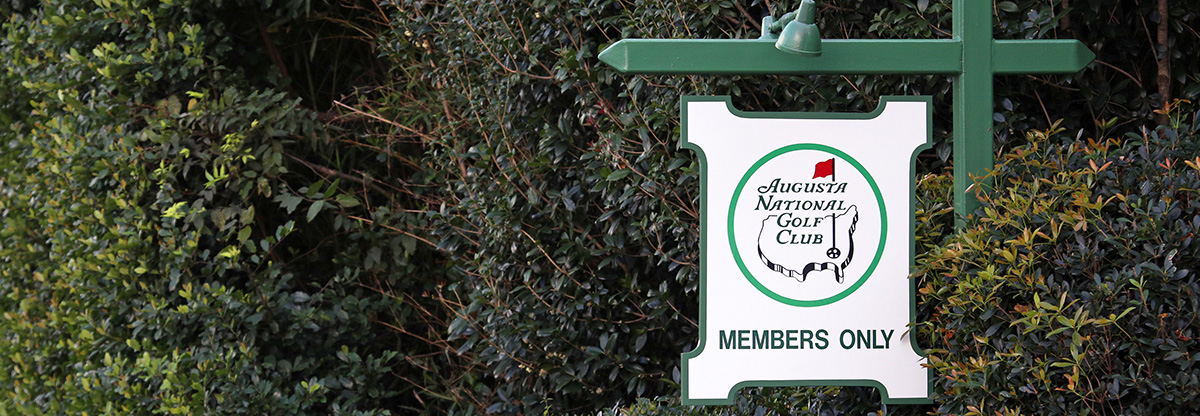
Myths of The Masters
1. Bird noises are piped in by television companies
2. Cows were once used as lawnmowers
3. The bunker sand isn't actually 'sand'
4. The water is dyed
5. The club lays ice on flower beds to delay their blooming
6. Phones are banned from the golf course
7. The course shuts from May until October
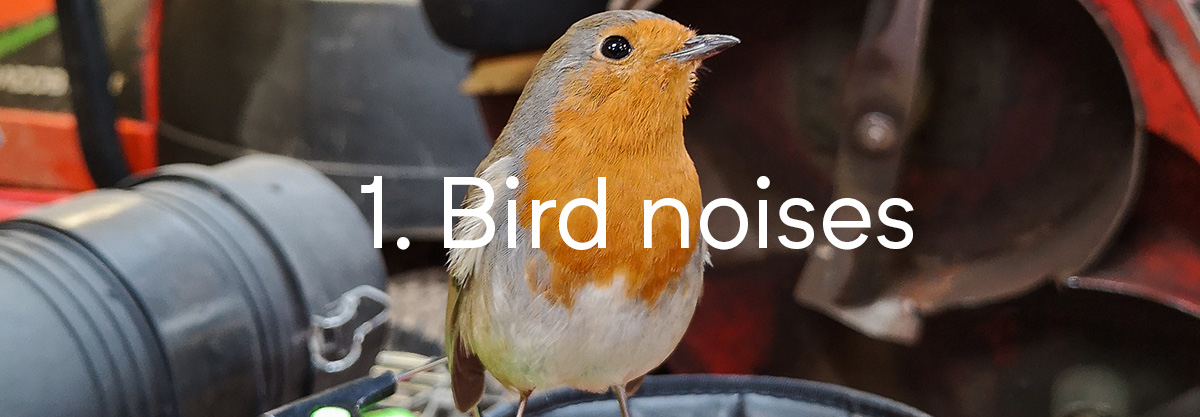
A popular myth only strengthened by the revelation in 2000 that CBS got caught playing bird sounds on a TV broadcast - although that was actually at the PGA Championship at Valhalla. Seeking to finally put the myth to bed, the New York Times reached out to Augusta National, bringing the prickly reply: 'The birds you hear are live and they are indigenous to Augusta'.
Quite simply, UK golf courses don't have to go to such lengths. Whether it be choughs at Newquay Golf Club or red kites soaring above fairways in north Leeds, golf courses are actually some of the most valuable habitats for maintaining the UK's bird species.
UK golf courses make up a combined area larger than all but seven of our national parks and the RSPB's Dr Marie Athorn explained how courses are well-placed to help wildlife and provide connectivity between existing habitats.
She said: "Golf courses not only provide a refuge for rare and declining species, but are also stepping stones across an increasingly fragmented landscape. We know that golf courses provide habitat for several bird species that are in urgent need of help. Willow tits and turtle doves are two of the fastest declining bird species in the UK and we have records of them using golf courses. The RSPB and The R&A are joined in partnership to not only showcase how golf courses are already supporting wildlife across the UK, but to advise more golf courses on how to support nature while still being fun and challenging places to play golf."
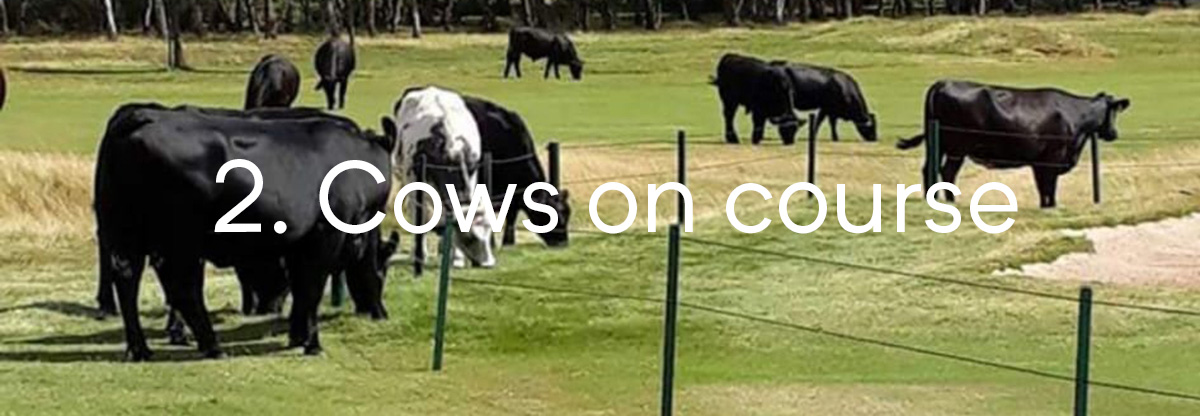
During the Second World War, Bobby Jones enlisted a herd of cattle to keep the Augusta fairways trimmed. Things have changed somewhat in the time since and the team (we presume) now uses state-of-the-art greens equipment to prepare the course.
But incredibly, over here in the UK you can still find a small number of golf courses that have cattle wandering the fairway - and as sustainable practices become more popular, the number may actually be on the rise.
Often the animals are kept off the putting surfaces by wire fences, but at the UK top 100 course at Sutton Coldfield, they use high tech GPS collars to create a 'virtual fence' around the course.
"Using your iPad or smartphone, you can put a fence up wherever you wish around the golf course," explained Course Manager Chris Roberts. "Then, when they come up against the invisible fence, it will pick them up on the GPS and deter them with a tone or slight shock. You can see the cows' heat maps like you see in the Premier League and track where they've been - they soon learn to stay away from the boundaries."
Unsurprisingly, if they get onto the greens, cows can quickly cause serious damage to the putting surface. But in the rough they help manage scrubland by eating the thicker grasses and providing opportunities for wildflowers and other beneficial species to come through.
"I was talking to a greenkeeper on the Welsh border and they're actually looking at introducing cattle for the purpose of maintaining scrubland," said Chris, adding that its not a flawless process and his team still have to keep an eye out early in the morning to make sure they don't bump into a sleeping cow.
GPS control means the cows can now be effectively kept away from playing areas - leading to the loss of one of golf's great 'unpleasant' jobs - it's no longer necessary to employ a staff member to clear up muck from the course. On the off chance golfers land close to some cow 'relief', the golfer is welcome to claim free relief of a different kind.
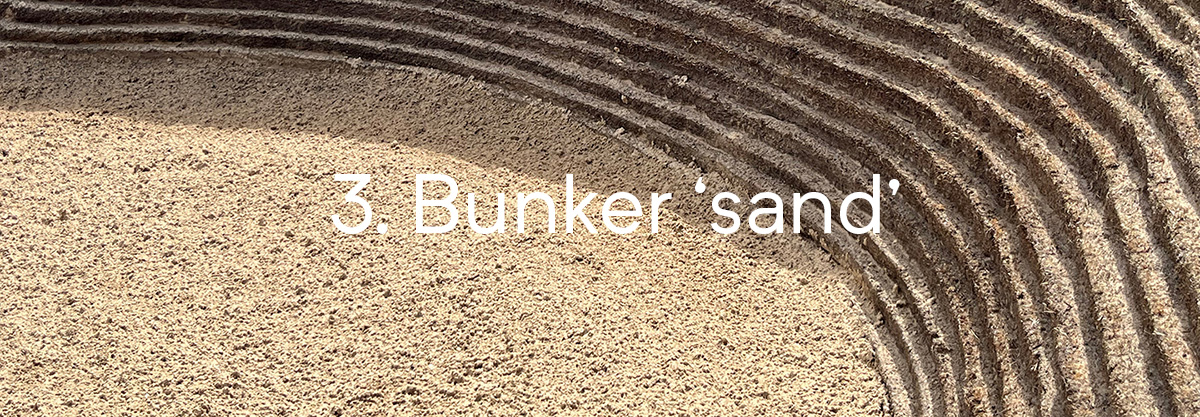
Did you know the brilliant white powder that fills Augusta's hazards isn't actually sand? Rather it's a type of quartz, mined from a single location in the United States and shipped to Georgia at great expense. Unsurprisingly, the cost of using ultra clean quartz isn't cheap, but neither is the regular sand used at everyday UK golf courses - and you simply won't believe how much sand is used on UK golf courses each year.
The type of sand that can be used on golf courses is particularly specific. Particles can't be too large, too small, too round or not round enough. For example, they have to react in a required way to offer a fair test in a bunker no matter the weather conditions.
"[Sand is] the foundation block of what we do and how we manage and construct our golf courses," said Dr Christian Spring of the STRI. "Our sands must meet specific requirements that are more stringent than other industries.
But did you know that the biggest use of sand on a golf course isn't actually your bunkers?
The average golf course goes through 40 tonnes of bunker sand each year. But the amount used for topdressing - that ever-popular process of aerating the greens and then dusting it with sand - is far greater, with 100 tonnes used on average per golf course. Topdressing is an important step in the creation of playing surfaces, removing organic matter that holds water and decomposing material and replacing it with a hard surface that can be prepared to suit golfers' needs.
In all, the average golf courses uses between 200 and 300 tonnes of sand and aggregate every year. With limited resources and high demand from other industries (the UK construction industry uses 15 million tonnes per year), costs are increasing and golf clubs are increasingly looking at sand-free ways of creating hazards for golfers.

This is one rumour that actually has truth to it - and you may see it at a golf course near you. But the use of dark blue dye isn't just used for aesthetic reasons, there's a practical purpose too. Dark-coloured dye is used to suppress harmful algae by blocking sunlight and reducing photosynthesis.
Algae blooms can suffocated water hazards, de-oxygenising them and creating lifeless underwater deserts. Dyes are safe and non-toxic, meaning they don't harm other pondlife and Augusta's water hazards are renowned for being well-stocked with fish - which is why keen presidential fisherman Dwight Eisenhower has a pond named after him on the par-3 course.
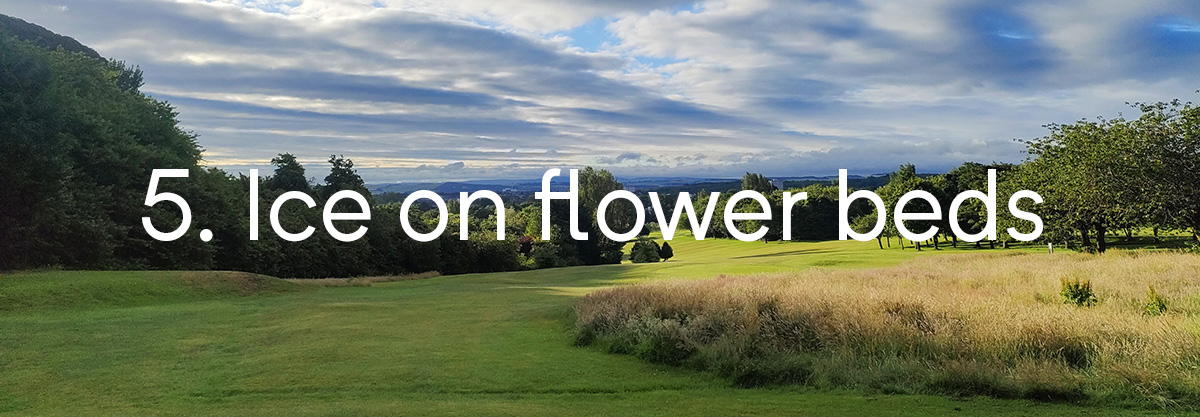
This myth has been pretty much debunked over the years, not least because it makes no sense whatsoever, but it persists because it's so whacky that it fits in with the eccentricities of Augusta National.
There's no doubt that everything you see at Augusta is perfectly manicured, but at most UK golf courses, there's plenty more rough around the edges. That may be unavoidable and due to not having the resources to maintain an area, but increasingly UK greenkeepers are actively managing out-of-play areas with pollinators and other beneficial species in mind.
At Prestonfield in Edinburgh, Course Manager Shaun Cunningham raised a few eyebrows among the membership when he introduced 2.8 hectares of unmown rough. However, these have now become a popular feature of the golf course, not least because each week the team saves six hours of mowing and 50 litres of diesel by not maintaining those areas.
"Continued communication towards the membership at the start of the process was crucial to get them on board with our objective," Shaun explained. "We told them why we were doing it, what we would achieve and what the management plan for these areas would be going forwards.
"The thought process behind reducing previously managed rough areas was to deliver separation between previously dull holes and in turn deliver interest, diverse habitats and create a bigger focus on the golfer's course management. This sustainable approach has saved time, money and helped the golf course protect and enhance nature. Increased populations of mammals, grassland birds and wildflowers have been seen, greatly contributing towrads creating a natural setting for golfers to enjoy."
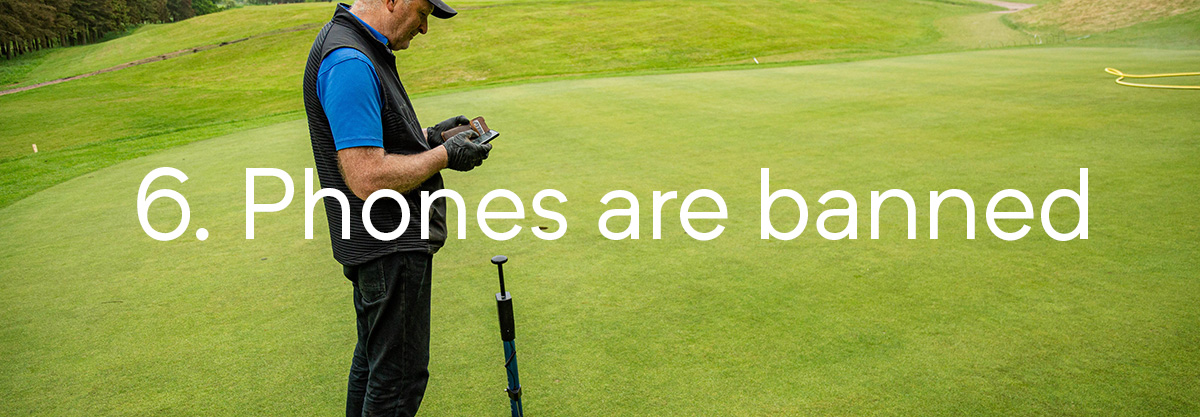
Have you ever noticed during the highlights packages that none of the patrons have phones in their hands, recording the moment? Of all oddities of Augusta, this is one we can really get behind as there's something wholesome about people living in the moment, rather than livestreaming a winning put.
But did you know, to a modern greenkeeper a mobile phone is among the most valuable pieces of kit in their arsenal?
"I couldn't live without my phone," said James Bledge, course superintendent at 2024 Open host venue Royal Liverpool. "In fact, I've never managed a golf course without a phone."
In charge of running an Open rota venue, James has resources available to him that others don't, but here are some of the ways he uses his phone on a daily basis to maintain the course:
- Multiple weather apps enable him to anticipate changes in the weather and adjust their plans accordingly
- Irrigation systems can be controlled using smartphone apps, meaning greenkeepers can specifically tailor which irrigation heads switch on and for how long - vastly improving water efficiency and reducing wastage
- The Syngenta Turf Advisor app features disease modelling, weather, growth degree days accumulation and provides important site specific data
- POGO tools measure moisture levels and these can be controlled using smartphones, with the data automatically going to the course manager's computer in the office
- Royal Liverpool has recently taken deliver of a GPS sprayer and using a smartphone app, James can tell the machine exactly where to spray and what rate to spray at, improving efficiency and improving sustainability
- Google Maps can help measure distances or the area of a surface, useful when laying out pipes or ordering resources to complete a project
- Drones are useful tools for looking at the course from above and are often controlled by smartphones
- The What3Words app is used to tell greenkeepers the exact point on a golf course that they're required - useful if there's a specific irrigation head or point that needs repairing
- WhatsApp enables the course manager to instantly communicate with his entire team, including sending messages or videos of appreciation that help boost morale.
- The club's BRS Golf status is updated using an app, enabling the course manager to instantly put restrictions on the course if required
- Greenkeepers often use social media, whether to share images or to provide course updates

To a UK audience, it's one of the biggest quirks in golf: just as we're gearing to get underway for the summer season, the members at Augusta enjoy the Masters and then watch as the course shuts down until October.
But anyone who's tried to play golf in the heat of summer in the southern United States will tell you, it's rather unpleasant. Warwick Manning is course manager at Cavendish in Buxton, a course with strong links to Augusta as it was designed by Dr Alister MacKenzie and shares strong links with its more illustrious cousin. Before moving to Cavendish, Warwick worked at golf courses in Arizona, so he knows well the challenges that come with a long, hot summer.
"Golf is hugely popular over there in winter because of the temperatures," said Warwick. People don't want to play in 100-degree heat, so courses are empty other than first thing in the morning and last thing at night."
But it isn't just the golfer's exposure to heat that causes problems and the course itself comes under serious stress during summer. In Arizona, the fine ryegrass used in warm climates during winter struggles to survive under the desert heat and is replaced by Bermudagrass that can survive hot summer temperatures. The sacrifice was fatter, thicker grasses that are more difficult to maintain and less enjoyable to play on - although grass technology is evolving all the time.
At Augusta they have similar problems and greens constructed of delicate bentgrass, which work well in winter but requires extreme care in George's hot and humid summer. They may be able to stretch what is achieved to the limits of human ingenuity, but even at Augusta they can't defeat the weather and the decision is instead made to close the course and make sure it's ready for play in October.
Summer comes to Cavendish too, but not to the same extent. And like most clubs in the UK, the course is still recovering from the long, wet winter we have endured.
"At the moment we're absolutely soaking wet," said Warwick. "Grass grows in air, not in water, so we're going to struggle for a little while. We'll have a slow growth period until the sun comes out and temperatures go up, which will help the course to dry out a bit."
Overseeding is just as important at Cavendish as it is at Augusta, although rather than a seasonal species change, it's more about strengthening the turf that's already there.
"Browntop bent is our natural grass species, so that's what we overseed with," explained Warwick. "When we topdress it's a big cement mixer of things that you chuck in to create the final product. There may be fertilisers, wetting agents, topdressings and that browntop bent seed. It's like a big cake, managing a gofl course, and you've lots of ingredients to put in to create the final product."
The British and International Golf Greenkeepers Association is Europe’s largest membership organisation for golf greenkeepers. Today BIGGA has around 5,800 greenkeepers and turf professionals as members. BIGGA is dedicated to the continuing professional development of its members, and in serving their needs will strive through education and training for standards of excellence in golf course management throughout the greenkeeping profession.
Tags
Author

Karl Hansell
Karl has been head of communications for BIGGA since March 2016. His duties include editing the monthly Greenkeeper International magazine, in addition to other communications activities for the association.
